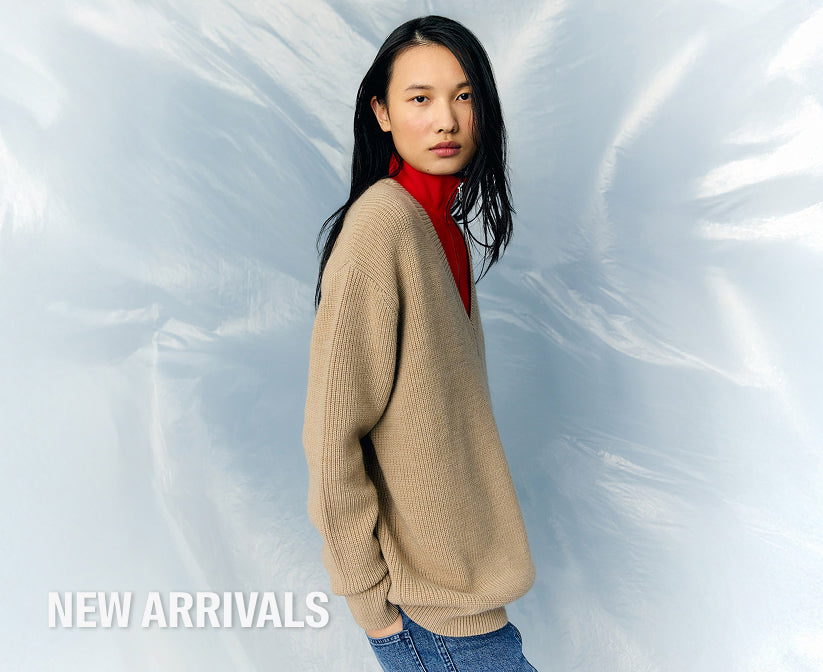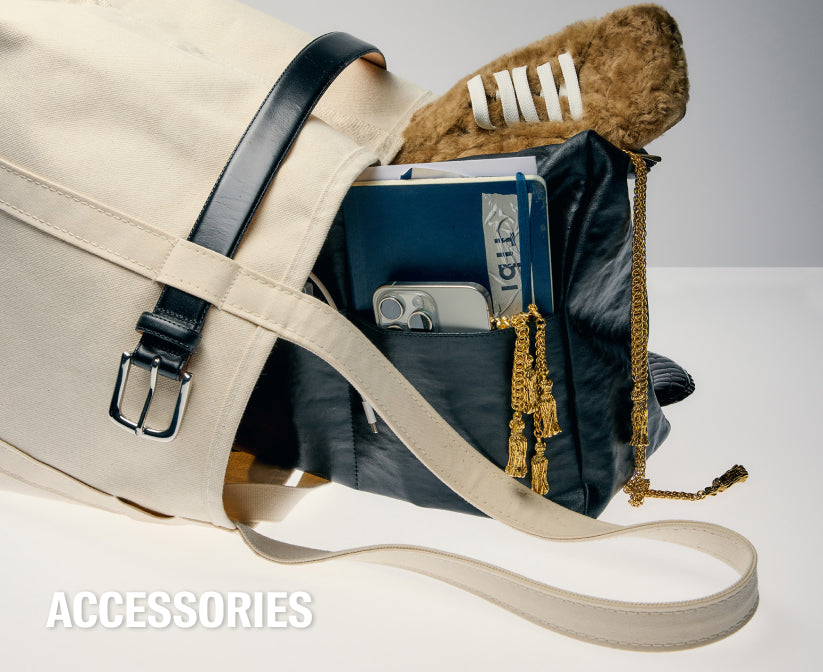Engineered to be oversized: When a style is designed to create an effortless oversized look but still fit technically by employing key measurements and techniques.
When style is born from utility, then it stands to reason it is a style you will utilize (a derivative of “utility”). A lot. But as per usual, I’m not advocating for oversized, all the time. Here’s why. When I ask you to describe yourself, I do this to help you make sure the clothing you buy is connected to who you are as a person. We know this is important because clothing should communicate, rather than confuse, your personal style, which really means it can say a lot about who you are. So, I use three adjectives to describe fundamentally what I’m about: chill, modern and a bit classic (CMC). I don’t use the word “oversized” because that’s not a thing. If you met someone for the first time, you would not say “I am oversized.” That doesn’t describe your mindset, right? To communicate CMC visually, I will always need a few items within categories (shirts, jackets, pants) that have tremendous ease, refinement and always something pushed and curious. So, of course I love a good slim blazer. It plays a role for me when it’s the tool I need to balance my outfit. And I love a big oversized blazer. Different blazers for different vibes or utility.
In this story, I will focus on what to look for when choosing oversized.
The pics are all Liams at different moments in time and place.
A. I employ the oversized blazer when I need the perfect overcoat to an evening outfit - something that keeps the shoulders warm and adds ease.
B. It’s my go to when I’m wearing trainers and something extra chill but I still want to be put together. Especially good when traveling as I need comfort, the ability to easily layer under the jacket (that minimizes packing space needs), and I just want to show my personal style but be appropriate to where I am.
C. It’s my balancing item when I need the good antonym employed. I love a pleated skirt, but I never want it to make me look fussy or prissy. This jacket de-prisses.
D. It acts again as an antonym when paired with something uber feminine. If this blazer was slim, and I wore it with the lace collar, you may be confused about my style. This keeps it all in check.
E. It works as a valve to downplay something a little fancy like the silver sandal. Imagine a fitted blazer and the silver, it could look a little contrived in that it would be just so perfect. Way too perfect for my vibe.
F. It’s the lounge about jacket. Anything higher on the armhole, more fitted, just would not have the ease I am requiring here.
On the upper left here is a men’s blazer, straight up, from the men’s section. It’s a size Medium. On the right is the Liam Blazer. And below I have the Liam superimposed upon the men’s blazer. This is a good visual to explain areas of differentiation.
The Arm: You can see here the arm muscle measurement is more narrow than the mens. The slimmer arm makes the jacket appear a little lean but relaxed at the same time.
The Length: Any patternmaker when making a men’s coat would follow standard measurements - and this length would be the correct ratio for all the other measurements. But when a blazer is engineered, it doesn't follow standard ratios. The Liam is a little shorter in length than the men’s blazer. You can see the width across the chest is very similar, so to not overwhelm, and the Liam's arm is shorter in length.
The Collar: The neck opening on the engineered oversized blazer is more narrow. This is a key distinguishing factor, because when it’s too big at the neck opening it can gape and feel messy.
The Shoulder: The Liam is cut at a distinguishable slope which places the shoulder point well above where the armhole seam is found. This creates a dropped shoulder. The blazer on the left you can see has a very different armhole placement. Because the men’s blazer is cut with a padded shoulder and traditional armhole placement, the shoulder extends well beyond your actual shoulder forcing the armhole opening to be in the wrong place, creating a bulky and uncomfortable fit.
People often DM me this question: “will the “oversized” blazer trend die?” And my answer is, any style you are wearing because it’s a “trend” will ultimately die. They come back to life at some time, but there will always be a cycle. BUT IF you are wearing a style for its utility, then it will never die. It just becomes part of your personal style.
Here’s an example of the jacket when going to exercise class:
I advocate wearing the clothes you have. I don’t have “special jackets” for travel to workout class. I do have fitted blazers in my closet - but I employ them with Big/Skin/Slim - more snug on top and then a big Stella pant on the bottom, for example. But if I’m going to work out, the slimmer blazer (a.) feels forced. First, it’s not as relaxed as I want to be when I’m just headed to Barre class. The slim legging paired with the Slim blazer is not big/slim/skin - it’s just giving slim/slim/skin. See? Layering is also important here - the armhole is too high and the body too narrow to wear a sweatshirt underneath. The Liam (c.)? It’s as if it was designed for the very purpose of layering (ummm…..yes, it was -that’s a key idea behind “engineered to be oversized”). I also have a thing about showing my bum in a legging (d.). For class, yes, fine. But at the grocery store, I don’t need to go there. That may be just me. But I bet it isn’t.
So the ratio of slim to big blazers for the closet? That depends on your lifestyle, your vibe, and what the other items are in your closet. My oversized blazer collection includes the Tropical Wool in Navy (best for evening and as a suit), the same in Taupe (my airport and barre class go-to), and then every season or so I’ll get one in a new texture or fabrication to build out the range in my closet.
Here’s one more thing. And It’s important. The engineered oversized blazer is a forever piece for me - not a fad. If you view this as a trend, that’s fine, and that means it should not be an investment piece. There are plenty of cheaper items out there you can find - BUT, like anything in life, comes with a quid pro quo. The workmanship, the tailoring, the fabrication won’t be there for you. If you see this as a quick in and out of your closet piece, then that may be ok for your needs. But if, like me, it is a forever piece, then make sure you’re getting something that will indeed, not only last forever, but also look like you just bought it yesterday. The one pictured above? It’s 5 years old now - but you would never know it if you saw it in my closet.
OK?
Explore Tibi.




